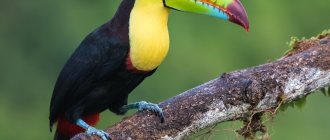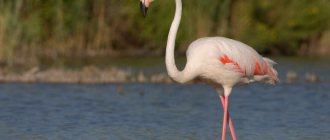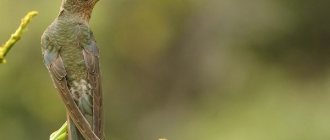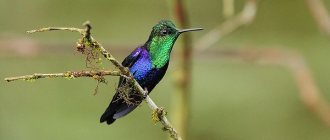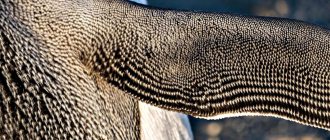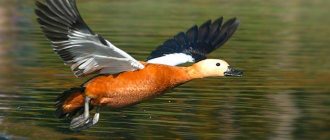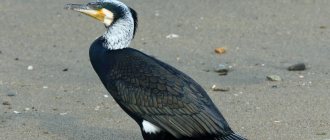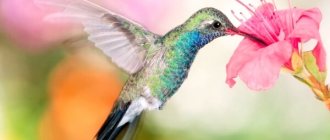Author: sdv
December 16, 2022 11:44
Community: Animals
Tags: animals interesting interesting facts useful birds toucan toucans facts
10866
15
1
When we are asked, “What is your favorite bird?”, we often think of majestic eagles, hawks, or wise owls. But why does everyone forget about toucans? What do we even know about these birds? These are feathered inhabitants of tropical forests with a distinctive feature - a huge beak. But if you delve a little into the facts, you can learn a lot of interesting oddities about toucans. These birds look like they are from another planet!
0
See all photos in the gallery
Woodcock
It’s worth noting right away that there are certain features of woodcock hunting. So, you should not shoot when the bird takes off, because there is a high probability that it may be a female. Why can't you shoot females? To keep the population from declining, the females are left to care for the eggs. If you kill a bird, the brood will disappear. In addition, she will not be able to lay any more eggs, which means that the population will inevitably decline next season. Interestingly, there is a ban on shooting at a woodcock if it flies silently, without the so-called “grunting”. This is logical: the characteristic sound gives this bird away, and they can be confused with other representatives of birds.
Woodcocks are birds with a long beak; photos with names clearly show how unusual they are. It is characteristic that when danger approaches, the bird presses very tightly to the ground and does not fly up: camouflage is created by yellow-brown and longitudinal dark stripes, as well as black-brown wings. The body has gray and red spots, and therefore it is almost impossible to distinguish it on the ground. It feeds on worms and other invertebrates. The woodcock itself can fit in the palm of your hand, as it has a small body size.
Natural enemies of toucans
Such birds have a sufficient number of natural enemies, since they are hunted by many birds of prey, large snakes, various cats and other predators that feel great on the tall trees of the tropics. Although this does not happen so often, thanks to the bright and multi-colored coloring of the bird. Due to the presence of bright flowers, the silhouette of this bird seems to break up into some bright components in the tree crown, reminiscent of tropical inflorescences or fruits, which misleads predators. In addition, the entire flock is capable of defending any of its relatives that a predator dares to approach. The birds immediately make such a noise that any predator immediately thinks about how to quickly get away from this place.
Captivity
By nature, toucans are very peaceful and friendly. Therefore, with proper care, they can live peacefully in zoo cages or even in houses and apartments. Birds quickly get used to people and begin to trust them.
An important condition is to create a structure that imitates the arboreal habitat that birds love.
At the same time, toucan-like animals trust humans with their diet. Without the need to obtain food on their own, they eat almost everything that is offered by people. These can be protein products, insects, and even small amphibians.
However, those who decide to own such an exotic bird as a toucan should remember the cost of purchasing such an animal. Purchasing a bird in our country costs at least 60,000 rubles, and also requires the necessary documentation and confirmation of decent living conditions.
Toucans require constant attention and care, which they should receive from their owner or zookeeper.
So, in this article we looked at the features of very beautiful exotic birds - toucans. We advise you to visit zoos that display all types of these beautiful animals. After all, each species is unique in its own way and is an extremely fascinating subject for further study.
Population and species status
Some species of toucans are still protected, despite the fact that the populations of these birds are very large. The main problem is related to the fact that toucans are able to live exclusively in tropical conditions. Depending on the species, birds have the following statuses:
- Great toucans, lemon-throated toucans, red-breasted toucans and rainbow toucans are designated as "least concern" species.
- The Yellow-throated Toucan has been classified as Near Vulnerable.
- White-breasted toucans, blue-faced toucans and ariel toucans are considered vulnerable.
Toucans are very noisy birds that prefer to stay in small groups, but under certain conditions they are capable of forming large flocks. Sticking to their groups, these birds feed, and if necessary, all of them together can repel anyone who encroaches on their comfort, and even more so on their life. These birds are considered omnivores, although the basis of their diet is plant foods. They feel great in captivity, and they also have a friendly and affectionate disposition. If you tame them, these birds will delight the owner and all other family members for decades with their cheerful and sometimes harmless antics. Some tribes living in the same territory as toucans practice keeping toucans as poultry.
Types of toucans with photos and names
To date, scientists know of eight species of such birds. These include:
Yellow-throated toucans (Ramphastos ambiguus)
The body length of these birds reaches no more than 60 cm, with a maximum weight of 750 grams. The main color of the plumage is black, but the throat and upper chest area are distinguished by a bright yellow color, and they are separated from the main color by a narrow red border. The undertail of these birds is bright red, and the rump has a creamy white tint. The beak is characterized by a two-color color, which is divided diagonally in the form of dark and light shades. The upper part of the beak is bright yellow, and the lower part is either black or brownish-chestnut. A wide pale green edging is clearly visible around the eyes. The natural habitats of yellow-throated toucans extend to the territories of Peru, Ecuador, Colombia and Venezuela, bordering the eastern part of the Andes.
Ariel toucan (Ramphastos vitellinus)
This species of toucan is slightly smaller than yellow-throated toucans and grows to a length of no more than 48 cm, weighing about 400 grams. The main color is lacquered black, although the lower area of the head, throat and upper chest area are characterized by the presence of a bright yellow spot. The base of the completely black beak has the same coloring. The boundaries of yellow and black shades are indicated by bright orange-red markings. The undertail and spots around the dark eyes have the same color. The natural habitats of this species of toucan are the southeastern Amazon.
Lemon-throated toucans (Ramphastos citrolaemus)
These birds are the same in size as the previous variety. The main color of the plumage is coal black, and the upper chest and throat are pale lemon in color, and closer to the sides the color is almost white. Around the eyes the color is light bluish, and in the lower part it turns white. At the top of the beak you can see a bluish-yellow narrow stripe. The base of the beak has the same color. Lemon-throated toucans are found in Venezuela and Colombia.
Blue-faced toucan (Ramphastos culminatus)
These members of the family grow up to 48 cm in length, with an average weight of about 380 grams. On the upper part of the chest and on the throat there is a white spot, which is edged in the form of a red narrow stripe. Bright blue spots can be seen around the eyes. The upper tail of the birds is distinguished by a brick-reddish tint, while the beak is black, and a pale yellow stripe runs along the top of the beak. The base of the beak is yellow. Natural habitats are associated with forest plantations of Venezuela, Bolivia and Brazil.
Red-breasted toucan (Ramphastos dicolorus)
They are considered the smallest representatives of the toucan family. The average weight of a bird is about 320 grams, with a size of no more than 46 cm. These birds have a beak that is not as long as other members of the family. The upper part of the chest, as well as the throat of toucans, is colored yellow-orange, turning into pale yellow at the edges. The lower chest area and belly are colored red, and the spots around the eyes are the same color. The beak has a greenish-blue color. Natural habitats are the forests of Brazil, Bolivia, Paraguay and northeastern Argentina.
Rainbow toucan (Ramphastos sulfuratus)
They have body sizes within half a meter and an average weight of about 400 grams. The chest area, throat and lower part of the head are lemon yellow. The border with the main black color of the plumage is separated by a narrow red stripe. The lower part of the bird's tail is bright red. The beak has a black edging, which encloses 4 shades in which the beak itself is painted: green, blue, orange and red. The edges of the upper and lower parts of the beak also have their own black edging in the form of narrow black stripes.
Great toucan (Ramphastos toco)
They grow over 60 cm in length and can weigh almost 700 grams. The lower part of the head, throat and chest are highlighted with a white spot on the main black background of the plumage. The top of the tail is the same bright white, while the top part is red. The eyes appear to be located in bluish circles, which are indicated by orange stripes. The main color of the beak is yellow-orange, but in its upper part there is a red stripe along the beak. The base of the beak is marked with black spots, as is its tip. Birds prefer to live in Bolivia, Peru, Paraguay and Brazil.
White-breasted toucan (Ramphastos tucanus)
The average weight of the bird is about 600 grams with a body size of about 58 cm maximum. The upper part of the chest and throat is characterized by a pure white color. This area is delimited from the main black color of the plumage by a red stripe. The color of the beak is very varied, although the main tone is red, while the upper area of the beak is characterized by splashes of turquoise and bright yellow, which in turn have a jet-black border. This bird lives mainly in the Amazon.
Important fact! Toucans got their name due to the fact that one of the representatives of this family makes sounds similar to the consonance of “tokano!”
Pelican
Eight species of these amazing birds live on the planet. They settled everywhere except Antarctica. They are distinguished by their unusual beak, with the help of which they obtain food for themselves. Under the beak there is a leather throat pouch.
The bag, like a net, is used to catch fish and filter water. This feature also allows them to make calling sounds during the mating season. The American pelican also has a horn on its beak, which other species do not have.
12
Roseate Spoonbill
The ibis family, to which the spoonbill belongs, is unique in itself. And this resident of Florida also has an unusually shaped beak, which helps her easily obtain food.
With such a long, flattened beak, the bird reaches small fish, crustaceans, and waterfowl in shallow water. Despite Florida's mild climate, spoonbills migrate to Chile in the winter.
5
Black vulture
The five is opened by a black neck. Vultures are huge predators on our planet and you can easily verify this by paying attention to their dimensions. The total length varies from 0.75 to one meter, and the length of only one wing is almost 85 centimeters.
But what really shocks you is the wingspan; it takes up as much as three meters of space. The weight of the griffin is also impressive. An adult weighs from 7 to 12 kg, perhaps precisely because of its incredible size, the black griffin has become the object of various myths and computer games.
For example, in eastern myths, vultures are considered one of the images of the birds of Gerrud - a half-man, half-bird. But in my favorite game, the heroes of sword and magic, griffins, beat one of the most necessary units, as they hit back at absolutely everyone.
Steller's sea eagle
Another representative of the hawks. The body length of the creature is from 105 to 112 centimeters, the size of the wings is also impressive, because the length of one wing can reach almost 70-90 cm.
As for weight, it varies from seven to nine kilograms. The main part of the eagle's diet is fish, so this animal is largely attached to the sea coasts and can often be found there.
The representative of the hawk family does not disdain mammals, as well as carrion. This species is actively protected in many countries, and most actively in Russia and Japan.
Features of sandpiper behavior
This numerous red-beaked bird can be identified by its sharp call. Its long beak with sharp edges allows it to easily pull sandworms out of a hole or easily open the valves of mussels.
It should be noted that the behavior of waders varies greatly during low and high tides. In the first case, they are quite active, rummaging through algae and sand in search of food. During high tide, birds wait out the time by standing motionless on rocks protruding from the water.
Such a seemingly large and inconvenient beak plays an important role in searching for food both from water and from sand over long distances and in depressions.
Summarize
The main function of the beak in birds is to capture and grind food. But birds also use it for hygiene, to clean their feathers, as they say. It is also a construction tool for creating nests. Beaks are also dangerous weapons with which birds defend themselves from enemies.
The editors of most-beauty.ru ask you to write in the comments to the article what other birds with beautiful or unusual beaks should be on our list.
Reproduction and offspring
Toucans are birds that form pairs for a long period and do not change their partners. As mentioned above, their nests are located in tree hollows, where the female lays several eggs, but no more than 4. The eggs are white and oval in shape. The eggs are incubated by both the female and the male in turn. After a couple of weeks or a little longer (it all depends on the type of bird), the offspring are born. The chicks are absolutely helpless. After about three weeks, not earlier, the chicks begin to see. The plumage also does not grow as quickly, so even at a month of age they are not completely covered in feathers.
Interesting moment! Since toucan chicks have to stay in the nest for at least 2 months, and the bedding in the nest is not entirely soft, the chicks have heel calluses that prevent their heels from rubbing.
Both parents take part in the process of feeding the chicks, and sometimes some relatives join this process.
This continues until the young toucans begin to fly. Then they, along with their parents, will join their pack back.
Moa
And in first place we have the largest and heaviest - moa. Even if you really want to look at this bird, you are unlikely to be able to do so. Moas are one of the extinct birds; they did not have wings, but they are rightfully true giants. The largest representatives of this species grew up to 3.5 meters in height.
And they had a body weight, just imagine, 250 kilograms. Despite their menacing appearance, moas were herbivores and consumed fruits, leaves and other greens. According to scientists, these creatures became extinct around 1500.
They were exterminated by the aborigines. Of course, it’s hard for us to imagine what would happen if these giants lived with us now.
Thank you for being with us and spending time on our blog. By the way, there are interesting articles about the smartest dogs and the most expensive cats! I would be very grateful to each of those who leave a comment under this article and share the link with friends on social networks. I wish you everything, not like everyone else, but like none of us, take care of yourself and your loved ones.
Ivan was with you.
Flamingo
One of the most graceful birds, to which poems and songs are dedicated. One of the differences is the massive, slightly downward-curved long beak. Flamingos find food in ponds and wetlands, and their beak acts as a filter for silt and water. They have long legs. From a height it is easy to spot a fish and catch it with your beak. The pink plumage, as well as the peculiar line of the flamingo’s neck, are also surprising.
13
Natural habitats
These birds nest primarily in the forests of Central and South America, including Mexico and Argentina. Toucans are found both in flat areas and in the mountains, at an altitude of 3 km above sea level. For their nesting, birds choose areas not in dense thickets, but on the edges or in sparse groves, where it is somewhat lighter and where the sun's rays reach.
They prefer to live in tree hollows, while their beak is in no way designed for making holes in trees, even old ones, so the birds settle in old hollows or nests of other birds, abandoned for a number of reasons. You can often observe how several adult individuals inhabit one hollow at once.
Interesting to know! Due to the fact that the bird has a huge beak, it simply gets in the way when the bird is in the nest. To somehow minimize such discomfort, birds turn their heads back and place their large beak on their back or on the back of their relative.
Features of nesting chough
Chough mostly nests in colonies, and they remain in one place for centuries. These birds usually place nests built from branches in caves or rock crevices, away from strong winds and whirlwinds.
The clutch of eggs is incubated only by the female for approximately 18 days. During the period of increased chick growth, parents feed their young every 60 minutes, bringing food in their submandibular pouch. The cubs fly out of the nest after about 38 days, when they are already quite confident in flying. Despite this, the family does not break up for a long time.
Swordbeak Hummingbird
An amazing bird in itself, the smallest among the feathered inhabitants of the planet. If you look at the proportions of the length of the beak in relation to the body, then the hummingbird has the longest beak of all birds.
This species has a long beak that helps to obtain delicious nectar from flowers with long corollas. For other species of hummingbirds, such food is not available, but swordbills skillfully use this morphological feature.
8
Diet of toucans
It is believed that toucans are mainly non-predatory birds, so the basis of their diet consists of fruits and berries, as well as flowers of various tropical plants. The bird, being on the branch of a huge tropical tree, uses its beak to pick its fruits. Thanks to such a long beak, the bird manages to get food for itself, which grows on small branches that cannot support the weight of toucans.
Despite their herbivory, toucans, on occasion, will not miss the opportunity to eat a spider, various insects, frogs, lizards, small reptiles, and also destroy the nests of other birds.
When kept in captivity, they are absolutely undemanding in terms of diet, since they will eat whatever is offered to them. They will easily eat bread, nuts, all kinds of cereals, eggs, fish, small invertebrates, as well as insects and frogs. Tropical fruits and berries can be offered to toucans as treats, as these are part of their natural diet.
INTERESTING VIDEO - TOUCANS (Tropical Woodpecker)
Shoebill
We wrote about this beautiful bird on most-beauty.ru in an article about the most beautiful birds in the world.
In the swamps of East Africa you can find an unusual bird, which ornithologists also call the royal heron. The unusual thing is that the shoebill's massive beak looks like a shoe.
In German and English, the species name is translated as “shoe-headed.” He is an excellent fisherman, and became a master of fishing thanks to the special shape of his beak. A natural predator easily looks for fish in troubled waters and kills them with its massive beak.
6
Golden eagle
Next on our list is the most popular representative of the hawks, many adore it - this is the golden eagle. An eagle, which can quite rightly be called the largest. The entire length of the individual varies from 176 to 193 cm.
The scope is simply amazing in its scale, just imagine wings of 2.5 meters. Females again exceed males in weight: the fair sex weighs from 3.5 to 6.5 kilograms, while males weigh from two to 4.5 kilograms.
These beauties are often used in hunting; the golden eagle is also a protected species, due to its sudden disappearance from some regions where it previously lived.
American Avocet
An elegant bird with beautiful plumage and long limbs. In nesting areas it is also called “blue paws”. She has one more feature. This is a long, slightly curved beak.
The avocet hunts crustaceans in shallow waters. This beak shape helps to catch small fish. The beak helps the pretty bird defend itself from natural enemies.
?
